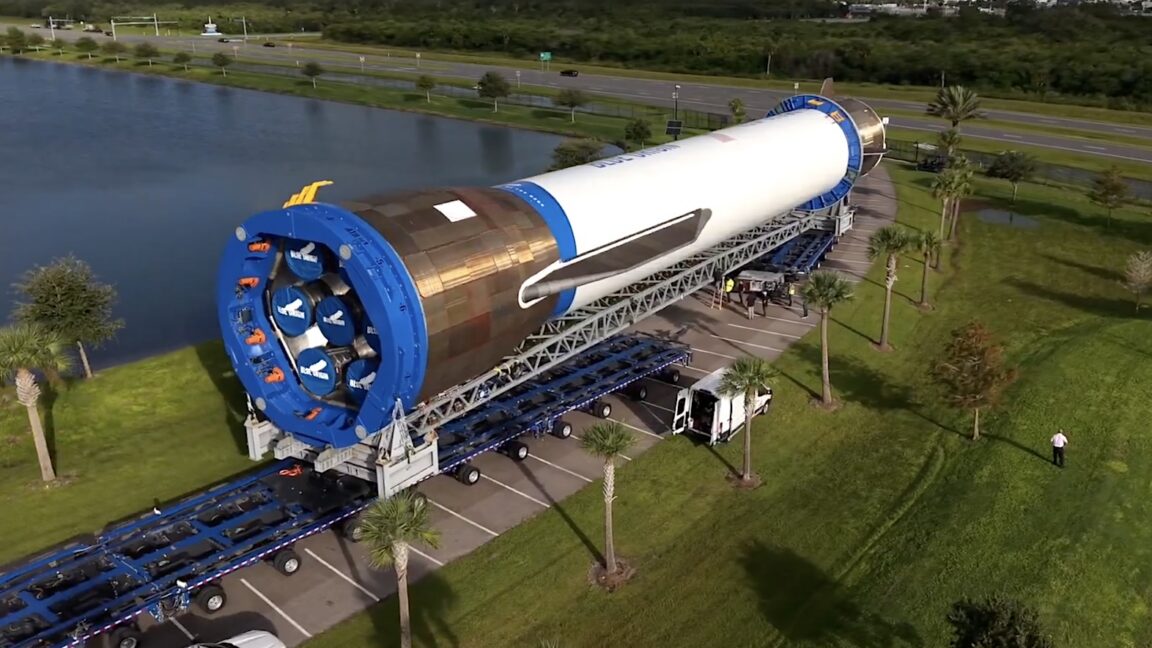Science
Space Industry Thrives Amid US Government Shutdown

The ongoing federal government shutdown has not significantly impacted the space industry, as military operations and NASA’s preparations for the upcoming Artemis II mission continue as scheduled. NASA is gearing up for the launch around the Moon, set for early next year from the Kennedy Space Center in Florida. The International Space Station remains operational with a crew of seven, and various spacecraft exploring the universe are also active. Despite the shutdown, which is affecting federal employees and military personnel who will soon miss paychecks, the commercial space sector remains largely unaffected.
Concerns Over Space Debris
Recent discussions highlighted the issue of space debris, particularly concerning dead rockets in low-Earth orbit. A study presented on October 3 at the International Astronautical Congress in Sydney noted that many of the 50 most concerning pieces of space debris are over 25 years old. According to lead author Darren McKnight, “Seventy-six percent of the objects in the top 50 were deposited last century, and 88 percent of the objects are rocket bodies.”
The report reveals that since January 1, 2024, China has abandoned 21 out of 26 rocket bodies left in orbit, contributing to the growing concern about space litter. The potential for collisions among these debris poses a risk known as Kessler Syndrome, which could lead to cascading impacts in orbit.
Blue Origin Expands Operations
In a move that underscores its growing role in the space sector, Blue Origin, founded by Jeff Bezos, successfully launched its sixth crewed flight of the New Shepard rocket this year. On this mission, which took place on Wednesday, a group of six passengers journeyed to the edge of space. With this flight, Blue Origin has now transported a total of 86 individuals into space.
As the company aims to increase its flight rate, it has maintained a consistent launch schedule, targeting approximately one flight per month. The latest launch demonstrated the company’s ability to conduct successful operations, as both the booster and the capsule returned safely to the ground.
The company has also secured a $78.2 million contract with the US Space Force to build a new payload processing facility at Cape Canaveral. This facility will support up to 16 missions annually, offering essential services such as charging batteries and fueling satellites.
NASA’s Investment in Advanced Rocket Technology
NASA has awarded a $4 million contract to the Ad Astra Rocket Company, founded by former astronaut Franklin Chang-Diaz, to further develop the Variable Specific Impulse Magnetoplasma Rocket (VASIMR). This technology promises to significantly reduce travel time to Mars, potentially allowing for human missions within 45 days using a nuclear power source.
Despite its potential, the VASIMR engine has faced challenges over the years, including funding issues and technical hurdles. Ad Astra has indicated that they are nearing flight readiness, although previous test schedules have been delayed due to redesigns prompted by overheating components.
Stoke Space and Gilmour Space Technologies Make Strides
On the investment front, Stoke Space has secured $510 million in Series D funding, bringing its total capital raised to $990 million. This funding will support the development of the Nova rocket, which aims for a 2026 launch, boasting a fully reusable design.
Similarly, Gilmour Space Technologies is planning to return to the launch pad next year following a failed orbital flight attempt over the summer. CEO Adam Gilmour reported that the company is well-capitalized and ready to move forward after learning from its previous experience.
SpaceX Continues Military Launch Contracts
In military contracts, SpaceX has emerged as a dominant force, winning five out of seven launch missions for the US Space Force this year. These contracts are valued at approximately $714 million, averaging around $143 million per mission. In contrast, United Launch Alliance received contracts for the remaining two missions at a higher average cost per launch.
As the space industry continues to evolve, it is clear that despite the challenges posed by the government shutdown, both established companies and new entrants are driving innovation and maintaining operational momentum. The resilience of the sector reflects a growing reliance on commercial enterprises to push the boundaries of exploration and technology.
-

 Science3 months ago
Science3 months agoToyoake City Proposes Daily Two-Hour Smartphone Use Limit
-

 Health4 months ago
Health4 months agoB.C. Review Reveals Urgent Need for Rare-Disease Drug Reforms
-

 Top Stories4 months ago
Top Stories4 months agoPedestrian Fatally Injured in Esquimalt Collision on August 14
-

 Technology3 months ago
Technology3 months agoDark Adventure Game “Bye Sweet Carole” Set for October Release
-

 World3 months ago
World3 months agoJimmy Lai’s Defense Challenges Charges Under National Security Law
-

 Lifestyle4 months ago
Lifestyle4 months agoVictoria’s Pop-Up Shop Shines Light on B.C.’s Wolf Cull
-

 Technology3 months ago
Technology3 months agoKonami Revives Iconic Metal Gear Solid Delta Ahead of Release
-

 Technology3 months ago
Technology3 months agoApple Expands Self-Service Repair Program to Canada
-

 Technology3 months ago
Technology3 months agoSnapmaker U1 Color 3D Printer Redefines Speed and Sustainability
-

 Technology3 months ago
Technology3 months agoAION Folding Knife: Redefining EDC Design with Premium Materials
-

 Technology4 months ago
Technology4 months agoSolve Today’s Wordle Challenge: Hints and Answer for August 19
-

 Business4 months ago
Business4 months agoGordon Murray Automotive Unveils S1 LM and Le Mans GTR at Monterey









